Over recent decades, Australian property investors have been accustomed to houses outperforming units. But recent data challenges this. Have the tables turned? Or is this merely a glitch?
The gap between house and unit median prices widened around a decade ago, and for any investors who held apartments over this time, they will know all too well that performance was sluggish. The Pandemic amplified this gap from 2020 as people sought space and land in exchange for high density, city living.
At the start of this year, the disparity between houses and units sat at it’s highest level. “The house premium rose sharply through the pandemic upswing as more people sought out space and were more willing and able to live further afield in our cities. While we saw the premium contract through the early part of the rate hiking cycle as house values fell more than unit values, across the combined capitals the gap between house and unit values has since rebounded to a new record high as house values once again rise at a faster pace than units.” Tim Lawless, Core Logic.
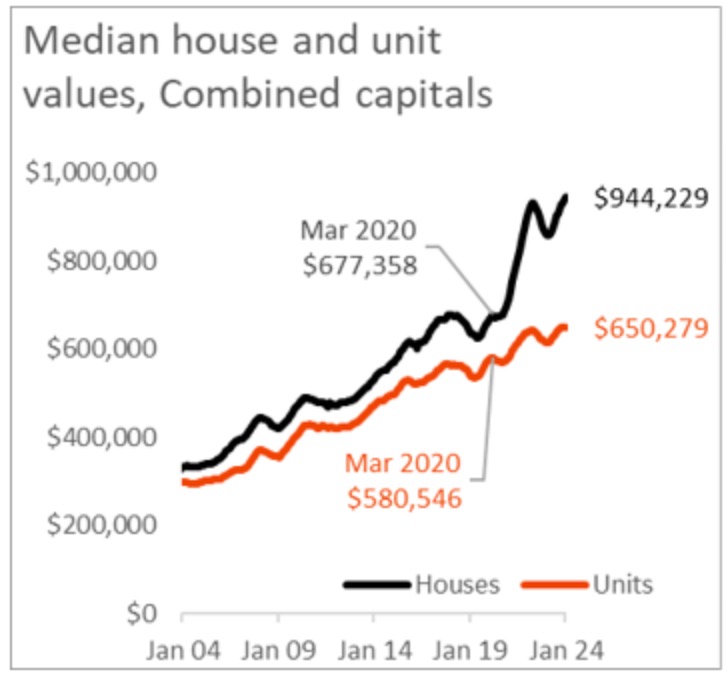
However, recent data shows that units are outperforming houses nationally.
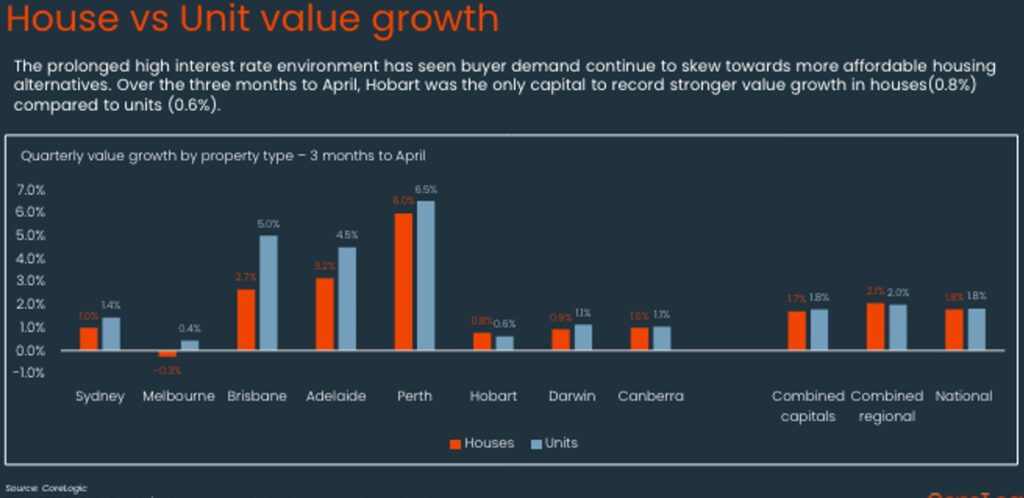
There are four main drivers of this trend. The first is obvious and relates to increased interest rates. Higher borrowing costs, in tandem with more restrictive borrowing capacities have dampened people’s ability to purchase higher priced assets. This chart below shows the relative performance of lower quartile price-points against the other quartiles in all capital cities. In most markets, the bottom quartile showed more strength than the others.
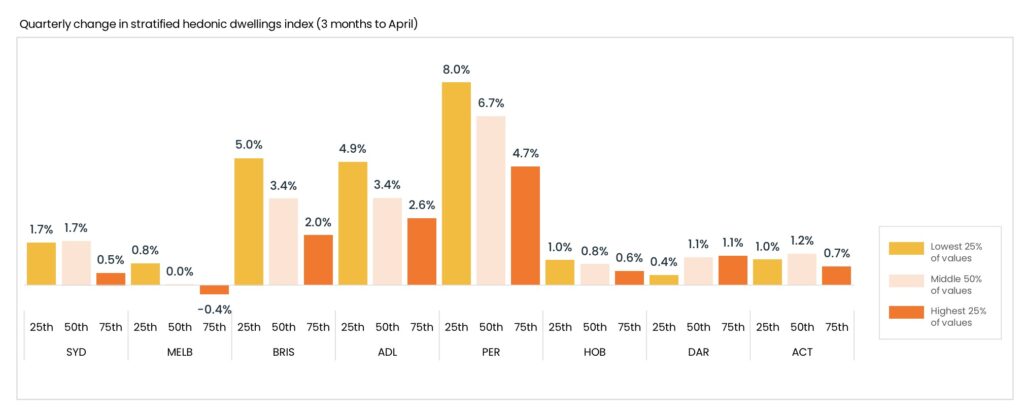
First home buyers are active participants in the housing market and they represent a proportion of unit sales, however they aren’t the only segment of buyers in this space.
Listing activity tells an interesting story. In this chart below, new listings are contrasted against all listings. It is evident that new listings are reasonable in number, yet all listings are below the five year average. What this tells us is that older stock with longer days on market is being snapped up. Typically the older listings have been apartments, and while they were unpopular during the COVID lockdown era, things have now changed. The lower building starts and approvals have no doubt played a huge part in this trend.
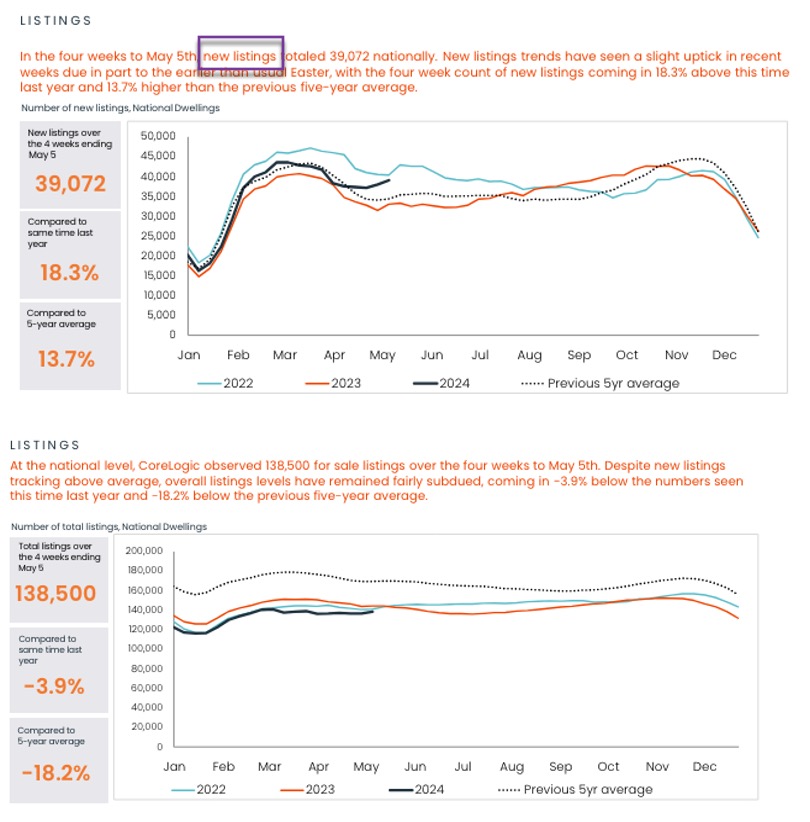
The second driver for unit outperformance indirectly relates to interest rates also, and applies to investors. Cashflow has been a prominent consideration for many investors, and units generally offer higher rental yields than houses. Combined with strong rental growth, the tighter vacancy environment has delivered a slight reprieve for investors who are reliant on the rental income to offset higher interest costs.
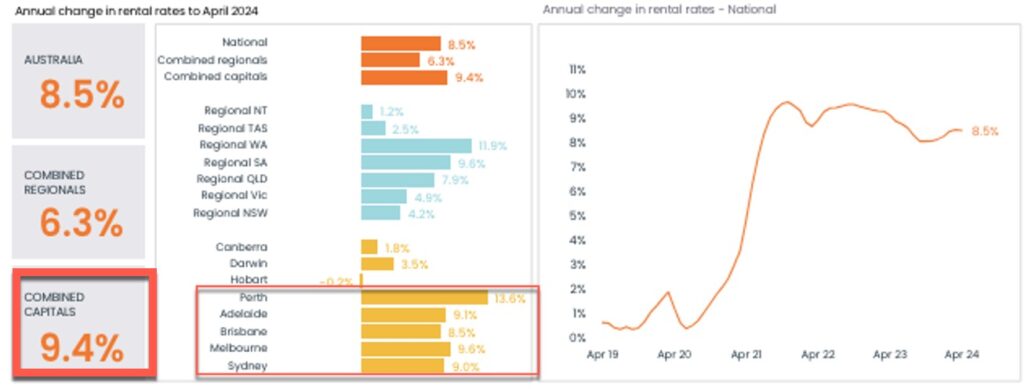
The third relates to another segment of the buyer pool who are often overlooked by the media and the politicians. It is the cohort who own two homes, transiting between their county/coastal house and their city pad.

Now that many bosses are calling workers back to the office, we’ve seen plenty of these types of assignments, where COVID lockdown escapees are looking to buy a bolthole in the city to help them manage their hybrid return to work arrangement. And for those who can’t afford to hold both, the sale of their regional property and return to the city ensues.
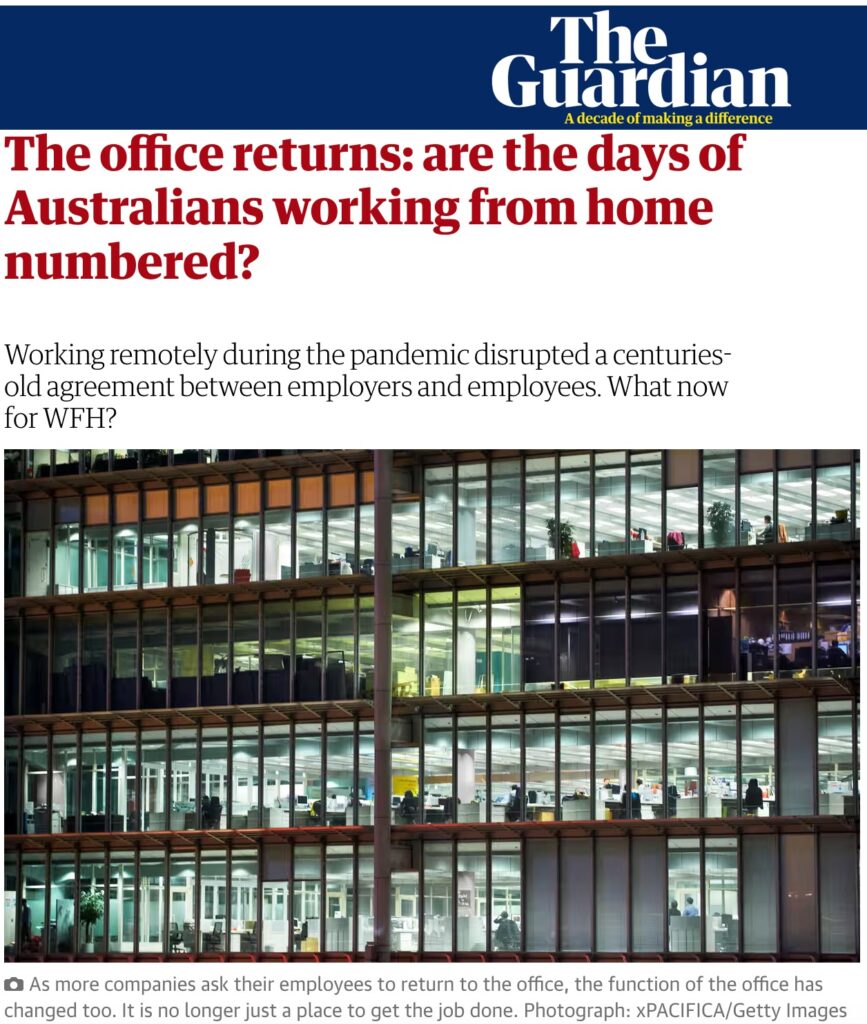
And the last reason, but certainly a compelling one relates to property taxes. From stamp duty to land tax (particularly in Victoria), higher priced assets command higher priced taxes. The table below shows our relative position against other countries in terms of stamp duty as a share of total tax revenue.
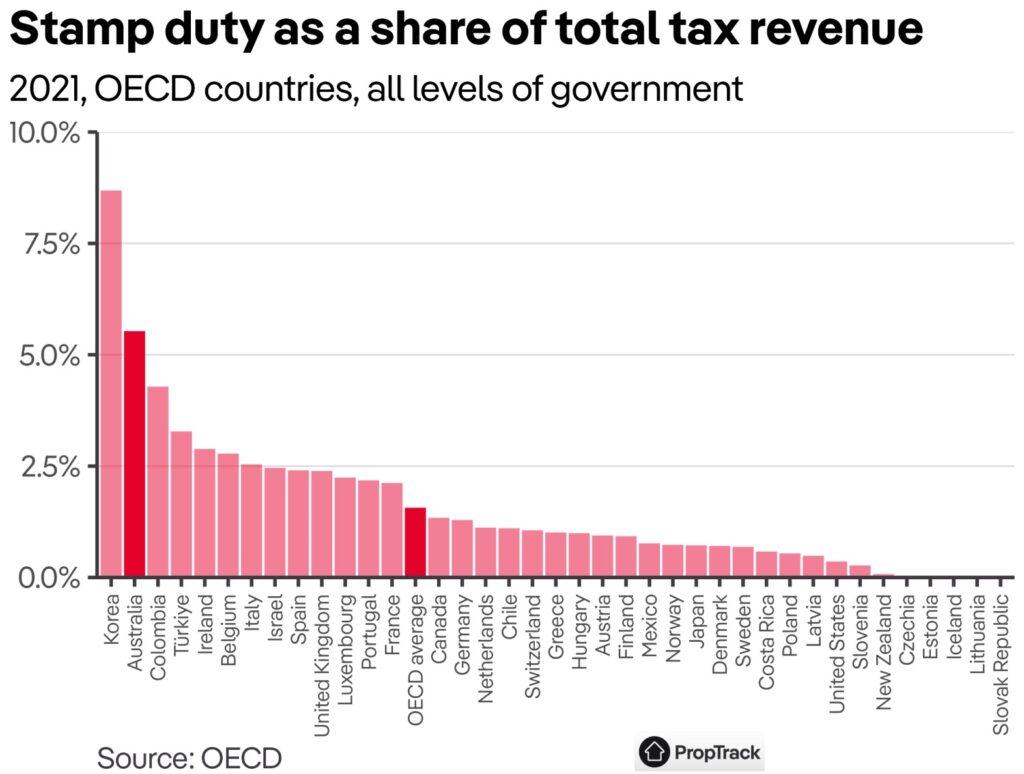
The burden created for many investors with land tax has been exacerbated with increased rates. While all properties in Victoria with land dutiable values above $50,000 are taxed annually, houses are typically representative of much higher tax rates because they have a larger land component. This tax has certainly influenced investor decisions of late.
The question remains. Will unit outperformance be sustained, or will higher capital growth rates revert to houses? While interest rates and taxes remain at current levels, we can anticipate the regaining popularity of units to last. Oxford Economics certainly suggest unit price growth will exceed that of houses in the coming years.
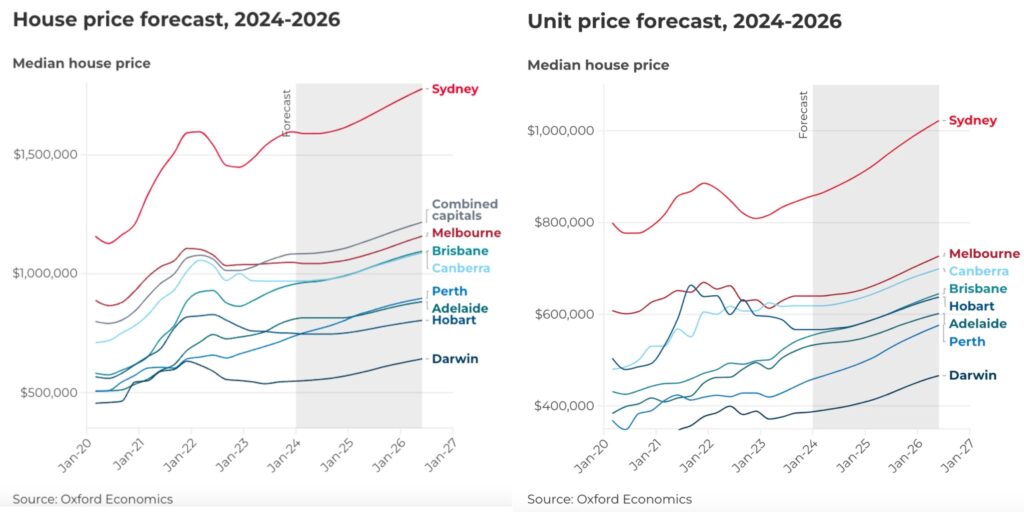
REGISTER TO OUR NEWSLETTER
INFORMATION
CONTACT US
1A/58 ANDERSON STREET,
YARRAVILLE VIC 3013
0422 638 362
03 7000 6026
CATE@CATEBAKOS.COM.AU
